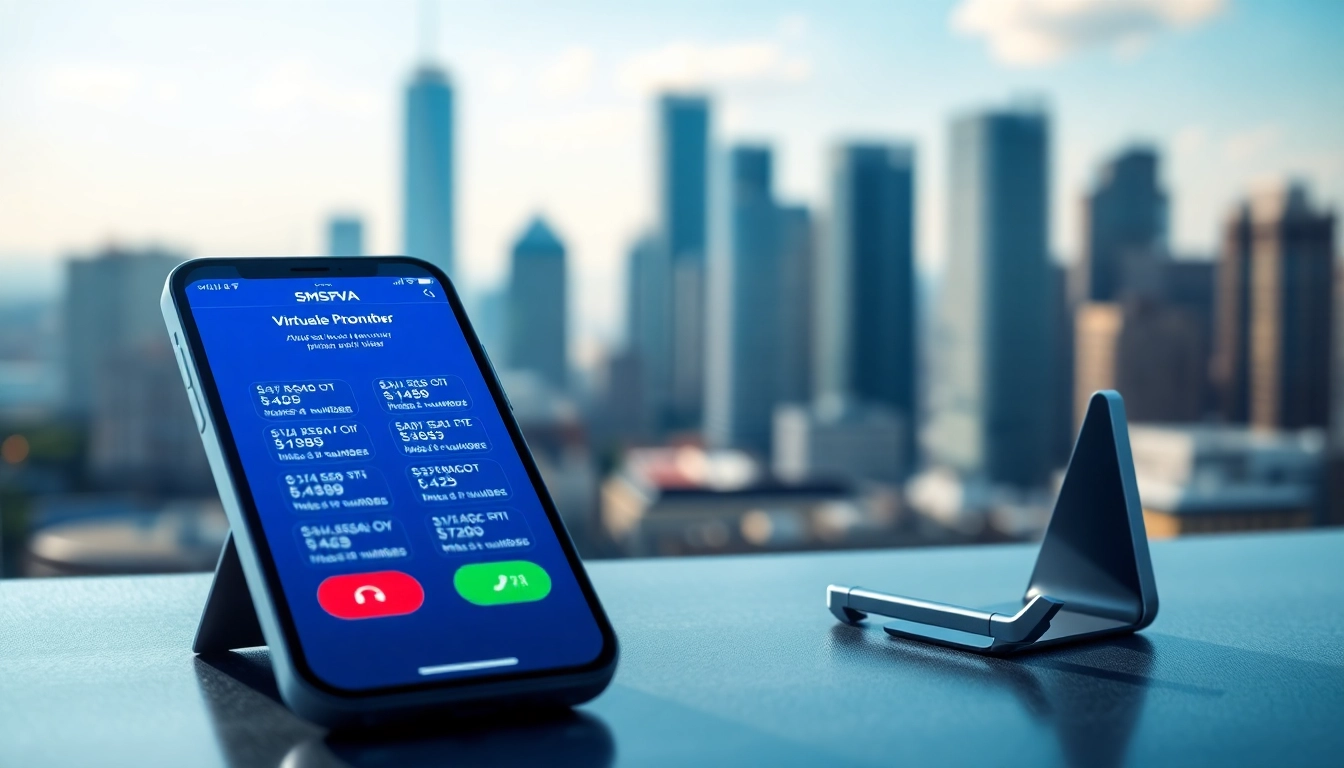Understanding the B2B Buyer Journey
The B2B buyer journey is a multifaceted process that involves various stages and touchpoints, making it critical for businesses to understand and optimize their approach. The journey can be complex and typically involves several decision-makers or stakeholders. As businesses navigate the shifting landscape of B2B transactions, understanding B2B buyers and their unique needs is essential for success.
Key Stages of the B2B Buyer Process
The B2B buyer process is generally segmented into distinct stages, each characterized by specific activities, goals, and behaviors:
- Awareness: This initial stage occurs when a potential buyer realizes they have a need or problem that requires a solution. During this phase, the buyer begins researching options, educational resources, and possible suppliers.
- Consideration: In this stage, buyers evaluate various solutions and vendors. They typically engage with content that details product features, case studies, and reviews to compare their options. The goal is to shortlist candidates that align with their requirements.
- Decision: Once the buyer has narrowed down their choices, they move to the decision stage, where they engage deeper with selected vendors, request proposals, and negotiate terms. This stage often involves detailed discussions with stakeholders and final evaluations of the offerings.
Identifying B2B Buyer Personas
Creating detailed buyer personas is instrumental in understanding and engaging B2B buyers efficiently. A buyer persona is a semi-fictional representation of an ideal customer based on market research and real data about your existing customers.
When developing buyer personas, businesses should consider factors such as:
- Demographics: Age, gender, location, education level, and job title.
- Professional Role: Understanding their responsibilities, decision-making power, and influence within the organization helps tailor communication effectively.
- Challenges and Pain Points: Identifying the specific challenges that B2B buyers face allows for the development of relevant solutions and content that resonates with them.
- Goals and Motivation: Understand what drives their decisions, whether it’s cost-efficiency, quality, reputation, or service.
Challenges Faced by B2B Buyers
Understanding the common challenges that B2B buyers encounter is crucial for marketers and sales teams. Some of these challenges include:
- Information Overload: Buyers often have access to too much information, making it challenging to discern what is relevant and valuable.
- Long Decision Making Process: In B2B transactions, multiple stakeholders are often involved, resulting in a longer buying cycle.
- Budget Constraints: Many B2B buyers operate on strict budgets and need to justify their purchasing decisions effectively to their organizations.
- Vendor Trust Issues: Given the high stakes in B2B purchases, establishing trust and credibility is essential for vendors.
Effective Strategies to Attract B2B Buyers
To effectively connect with B2B buyers, businesses need to employ a variety of strategies that resonate with their target audience and align with their buyer journey.
Leveraging Content Marketing for B2B Engagement
Content marketing plays a significant role in attracting B2B buyers. Effective strategies include:
- Educational Blog Posts: Providing informative articles that address the pain points and questions of B2B buyers can position a business as a trusted authority in their industry.
- Whitepapers and E-books: In-depth resources that delve into complex topics can nurture leads by providing valuable insights, making it easier for buyers to evaluate their options.
- Webinars and Online Events: Hosting live discussions with experts can create engaging opportunities for buyers to learn and interact, fostering a sense of community and trust.
Utilizing Social Media to Reach B2B Buyers
Social media is a pivotal platform in B2B marketing. To maximize effectiveness:
- LinkedIn Marketing: Utilize LinkedIn for targeted advertising, networking, and sharing industry-specific content that resonates with your B2B audience.
- Engaging Content and Discussions: Regularly post valuable insights, industry news, and engage in discussions to build community and visibility among potential buyers.
- Paid Advertising: Consider leveraging paid advertising to promote key offerings directly to decision-makers within your target industries.
Building Trust through Customer Testimonials
Trust is a critical factor for B2B buyers. Here’s how to build it:
- Showcasing Client Success Stories: Highlight cases where your product or service resulted in measurable success for customers.
- Endorsements and Certifications: Utilize third-party endorsements and industry certifications to lend credibility to your offerings.
- Creating Video Testimonials: Video testimonials provide a compelling way to present authentic customer experiences and can evoke emotional connections.
Optimizing the B2B Buyer Experience
Enhancing the B2B buyer experience requires a mix of technology and personalized approaches. Key strategies to consider include:
Enhancing Website Usability for B2B Buyers
A well-optimized website is critical for providing a seamless buyer experience:
- Intuitive Navigation: Ensure visitors can easily find information about your products and services.
- Mobile Optimization: With a rise in mobile usage, ensuring your website is responsive and accessible is essential.
- Clear Calls to Action: Use effective CTAs that guide buyers towards the next steps in their journey.
Personalizing Communication with B2B Buyers
Personalization can significantly enhance engagement:
- Targeted Email Campaigns: Utilize segmentation to deliver personalized content to specific buyer personas based on their behaviors and interactions.
- Follow-Up Messaging: Implement automated but personalized follow-up communications that show potential buyers you understand their unique needs.
- Tailored Recommendations: Use data analytics to present personalized product or service recommendations that align with their interests.
Utilizing Data Analytics to Improve Buyer Insights
Data analytics is a powerful tool to gain insights into B2B buyer behavior:
- Tracking Engagement Metrics: Monitor how buyers interact with your content across channels to refine your marketing strategies.
- Implementing CRMs: Use Customer Relationship Management systems to collect and analyze customer data for improved engagement.
- Predictive Analytics: Leverage predictive models to forecast buying behaviors and target audiences effectively.
Engaging B2B Buyers with Tailored Solutions
Creating relevant solutions tailored to the individual needs of B2B buyers is integral to driving conversions. Effective methods include:
Showcasing Product Benefits to B2B Buyers
Highlighting how your product benefits the target audience can greatly influence their purchasing decisions. Key approaches include:
- Clear Value Proposition: Articulate exactly how your offerings solve specific problems faced by B2B buyers.
- Real-Life Applications: Demonstrate how your product can be applied in real-world scenarios to reinforce its value.
- Use Cases: Share detailed use cases that illustrate the effectiveness of your solutions in achieving desired outcomes.
Creating Engaging Presentations for B2B Buyers
Effective presentations can make a lasting impact. Tips for creating them include:
- Simplicity and Clarity: Present information in a clear and straightforward manner to avoid overwhelming the audience.
- Visuals and Data: Incorporate visuals, charts, and data analytics to enhance understanding and retention of information.
- Interactive Elements: Consider incorporating interactive elements that invite participation and keep the audience engaged.
Effective Follow-Up Techniques for B2B Buyers
The follow-up is a critical aspect of the B2B sales process. Effective techniques include:
- Timely Follow-Ups: Ensure that follow-ups are conducted shortly after significant interactions to maintain momentum.
- Value-Based Follow-Ups: Provide additional resources or insights that could help the buyer in their decision-making process, rather than just checking in.
- Feedback Solicitation: Ask for feedback or insights regarding their journey so far, demonstrating that you value their opinions and are invested in their experience.
Measuring Success in B2B Buyer Engagement
Measuring success is essential to continue refining your strategies and ensuring effective engagement with B2B buyers. Consider implementing the following:
Key Performance Indicators for B2B Marketing
Establishing clear KPIs allows marketers to assess the effectiveness of their strategies. Essential KPIs include:
- Lead Conversion Rate: Monitor the percentage of leads that convert into customers to gauge the effectiveness of your sales funnel.
- Engagement Metrics: Track metrics such as click-through rates, time on site, and content shares to assess content effectiveness.
- Customer Lifetime Value (CLV): Calculate the value that customer relationships bring over time to justify marketing spending.
Analyzing Buyer Feedback for Continuous Improvement
Buyer feedback provides invaluable insights into areas for improvement:
- Surveys and Questionnaires: Implement regular feedback mechanisms to capture buyer sentiments regarding their experiences.
- Utilizing NPS (Net Promoter Score): This metric gauges customer loyalty and satisfaction, providing actionable insights into your offerings.
- Social Listening: Monitor social media and forums to capture unsolicited feedback that could be used for improvements.
Adapting Strategies Based on Buyer Behavior Trends
The landscape of B2B buying is continuously evolving. To remain relevant, businesses need to adapt:
- Trend Analysis: Continuously analyze market trends, buyer preferences, and technological advancements to anticipate shifts in behavior.
- Flexibility in Strategy: Be prepared to pivot strategies based on emerging data and insights that reflect changing buyer needs.
- Competitor Analysis: Monitor competitors to understand what strategies resonate with the audience and learn from their successes and mistakes.



